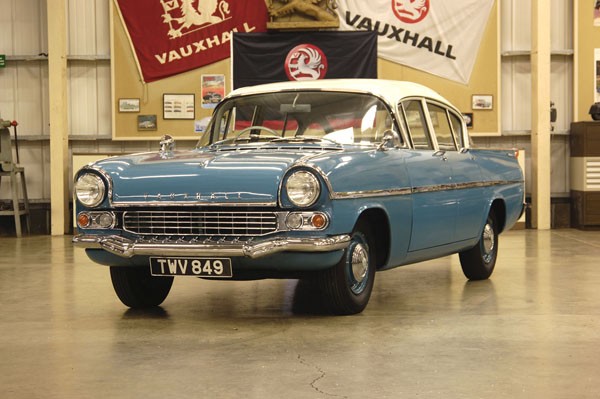Vauxhall cars were first produced in London 1903 and around World War I Vauxhall Motors was producing cars distinguished by its famed bonnet flutes. General Motors of Detroit bought the financially-ailing company in 1925 and soon began to transform it into a mass production concern.
While the Holden commanded most of the attention of GM-H after the introduction of the 48/215, it was not the sole product of the Australian organisation. Vauxhall Motors, the British subsidiary of GM, had always sold a reasonable number of cars in Australia and continued to do so after the introduction of the Holden. Marketed by GM-H through a separate distribution and dealer network, Vauxhalls in the 1950s were very British cars with their upright body styles and relatively low-powered engines in the four cylinder Wyvern and the six cylinder Velox. Although they were always slightly smaller than the Holden the Vauxhall tended to be ahead of the Australian car in body styling.
The last of the Australian assembled Vauxhalls offered different styling, with deeply curved “wide-view” windscreen and a wrap-around rear window to ensure clear vision all round. Slender, sloping windscreen pillars were well set back to minimise blind spots. The solidly constructed mono body carried the distinctive Vauxhall bonnet flutes and a bold front grille ensemble. Cabin styling was similar to the Holden.
Both the six-cylinder OHV Vauxhall Velox and the four-cylinder OHV Vauxhall Wyvern accommodated five or six people, while there was room to stow holiday luggage in the boot.
Both cars incorporated several important mechanical advances, the most notable of these being improved brakes and an easier clutch action. Vauxhall “balanced ride” suspension gave smooth riding at all speeds, while the light, accurate re-circulating ball steering resulted in good handling and easy parking.
“Oversquare” engines with their inherent design virtues of long life, good efficiency and economy, powered both models. The six cylinder Velox had a 17.5 kW OHV engine whilst the four-cylinder OHV engine produced a modest 12.4 kW.
Remaining on the Australian scene until the mid-1960s, Vauxhall’s following diminished among Australians who were looking to the Holden for something different, but not too different. Cessation of sales left GM-H with the problem of what to do with Vauxhall dealers, in most cases converting them to Holden, even though one existed just down the road.









